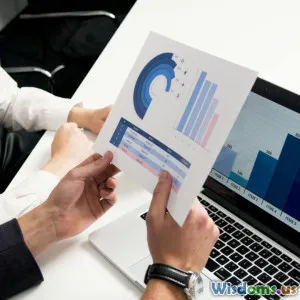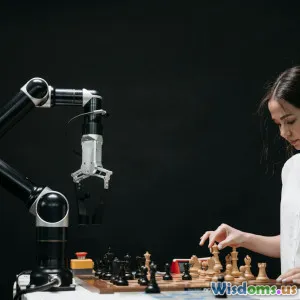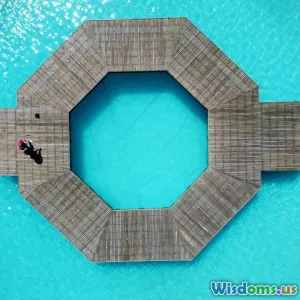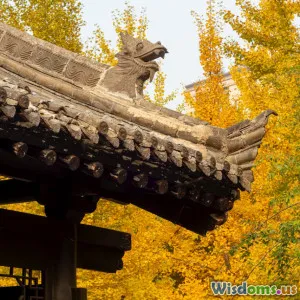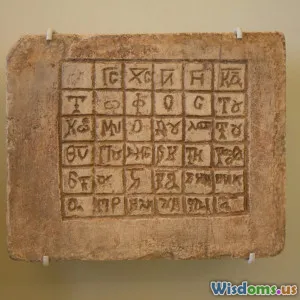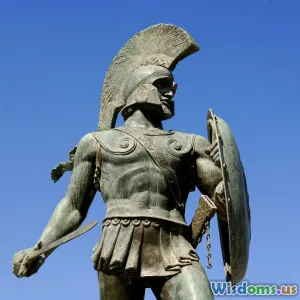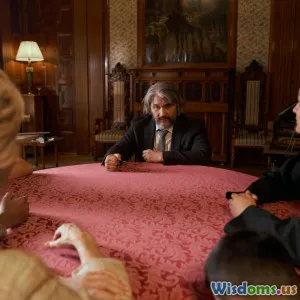
Step by Step Guide to Understanding Ancient China’s Oracle Bones
16 min read Explore the origins, uses, and significance of ancient China’s oracle bones with this detailed step-by-step guide. (0 Reviews)
Step by Step Guide to Understanding Ancient China’s Oracle Bones
Long before the glow of modern screens illuminated the world, ancient diviners in China carved critical questions into the bones of cattle and shells, sparking a world of mystical inquiry and linguistic innovation. Often deemed the earliest Chinese written records, oracle bones are windows into Bronze Age minds, aspirations, and anxieties. This guide will lead you through every phase of their journey, revealing why these enigmatic relics continue to fascinate historians, archaeologists, and language enthusiasts today.
The Discovery and Unveiling of Oracle Bones

In the late 19th century, farmers near the city of Anyang in northern China unearthed what they thought were “dragon bones” and sold them to apothecaries as traditional medicine. It was only in 1899 that Wang Yirong, a scholar and antiquarian, recognized the marks on one piece as ancient writing. This realization would drastically alter our understanding of early Chinese civilization.
Modern archaeological efforts, centered around the site of Yinxu (the last capital of the Shang dynasty), have uncovered more than 150,000 fragments and pieces of oracle bones, primarily ox scapulae and turtle plastrons. Anyang’s discoveries confirmed these were not mere animal remains—they documented the earliest practice of systematic divination and the birth of a writing system with links to today’s Chinese script.
The bones, often found in organized pits, contained inscriptions detailing everything from royal births to war plans, making them both artifacts and archives.
What Are Oracle Bones? Material and Process

Oracle bones chiefly consist of two materials: the flat shoulder blades (scapulae) of cattle and the undersides (plastrons) of turtles. Why these materials? Their broad, smooth surfaces made them ideal for carving, and they held ritual significance in ancient Chinese society. Cattle were feast animals and sacrificial tokens to ancestors; turtles, long considered symbols of longevity and wisdom, bridged the earthly and spirit worlds.
Preparing an oracle bone was a meticulous process. First, the bone was boiled or roasted to remove any meat and soften the surface. Next, carved hollows or pits—sometimes rectangular, sometimes oval—were chiseled into the smooth side. These acted as focal points for divination. The process would go as follows:
- Inscribing the Question: A diviner, typically serving the Shang king, carved the day’s date, the king’s name, and a specific question—ranging from weather forecasts to military campaigns.
- Heating the Bone: A heated rod was then applied to the drilled hollows. The sudden temperature change caused the bone or shell to crack.
- Interpreting the Cracks: The diviner “read” the cracks, regarded as messages sent by divine ancestors or supernatural forces, and recorded the interpretation. Ultimately, a verdict—affirming or rejecting the king’s hopes—was carved next to the cracks.
Modern scholars, through forensic and linguistic analyses, are gradually decoding these methods, reconstructing a ceremonial order largely lost to history.
Deciphering the Oracle Bone Script

Oracle bones showcase the earliest substantial corpus of Chinese writing, known as oracle bone script—an ancestor to modern Chinese characters. Unlike modern standardized scripts, these primitive glyphs are pictographic and often striking in their dynamic, hand-carved forms.
For instance, the character for “sun” (日), “moon” (月), or “king” (王) can often be directly associated with rudimentary sketches etched into the bone. Over 4,500 distinct symbols have been cataloged from Shang dynasty bones; around 1,000 have been more or less deciphered thanks to comparative study with later scripts.
Deciphering began shortly after oracle bones came to light. Scholars leveraged knowledge from early bronze inscriptions and used context—dates, known historical events, and repetitive phrases—to decode unfamiliar signs. For example, the dates inscribed often refer to the ten Heavenly Stems and twelve Earthly Branches system, still in use in modern lunar calendars.
Today, oracle bone script is not only an endless puzzle for linguists but also a fertile source of expression for artists and calligraphers inspired by its raw energy.
The Culture of Divination: What Questions Were Asked?

Each oracle bone is more than an artifact— it’s a transcript of existential curiosity. The archers of the Shang dynasty used them to pierce the veil of uncertainty around daily life, acting as spiritual barometers for the king and his court.
Typical questions included:
- Harvest Predictions: “Will there be a good harvest if we offer sacrifice to ancestor Q?”
- Weather Concerns: “Will the coming month bring rain or drought?”
- Military Campaigns: “Should the king attack the bordering state this season?”
- Childbirth and Health: “Will the queen’s pregnancy result in a boy?”
- Ritual Instruction: “Will sacrificing a cow ensure appeasement of the ancestors?”
These entries offer insight into what preoccupied the Shang king and how rulership involved a mix of politics, agriculture, warfare, and cosmic negotiation. The king was not only seen as a political leader but also as a critical mediator with ancestor spirits. His success was believed to hinge on successful divination.
Over time, repeated outcomes were sometimes annotated, showing the diviners learned from precedent—or revised the omens to fit the facts.
Oracle Bones and the Shang Dynasty: A Window to Power

The Shang dynasty (c. 1600–1046 BCE) represents China’s earliest historically confirmed dynasty, and oracle bones were at the core of its ritual and political machinery. The discovery of the royal palace at Yinxu confirmed the association between the powerful Shang kings and these artifacts.
Shang society was hierarchical and deeply religious; only the king and his appointed diviners could consult the ancestors—the ultimate arbiters of dynastic fate. According to inscriptions, significant rituals were performed in large wooden halls, surrounded by bronze vessels, sacrificial animal remains, and, sometimes, the remains of war captives.
Yinxu’s oracle bone caches provide unprecedented detail on king Wu Ding, the most documented Shang ruler. Questions about his campaigns, consorts, and even toothaches have been found, giving us a surprisingly personal look at ancient leadership.
Analysis of the bones reveals the king sometimes asked the same question multiple times, worded slightly differently, suggesting political—or psychological—maneuvering. The king supported his ritual monopoly both to strengthen royal authority and to reinforce the divine legitimacy of the Shang house.
Scientific Techniques: Unlocking Secrets from the Past

Over the past century, advances in archaeological science have revolutionized oracle bone research. After the initial “descriptive” phase—cataloging and transcribing inscriptions—came an era of ever-more precise analytical tools:
- Radiocarbon Dating: Modern labs date the collagen in bones, helping synchronize finds with a definitive chronology of the Shang dynasty and nearby cultures.
- Residue Analysis: Traces of fats and proteins reveal livestock diets and regional herding practices.
- Micro-CT Scans: Sophisticated imaging exposes even the faintest carved marks, uncovering “lost” or eroded inscriptions previously missed by the naked eye.
- DNA & Isotope Studies: Help trace the geographic origins of sacrificed animals, and show that trade and ritual networks were widespread across early China.
These breakthroughs not only illuminate the “how” of bone usage but often prompt new questions about the origins and evolution of ancient Chinese civilization.
Oracle Bones and the Birth of Chinese Writing

Contemporary linguists consider the oracle bone inscriptions the direct ancestors of Chinese writing—possibly the oldest unbroken written tradition in the world. The transition from pictographic sketches to the flowing brushwork of Chinese calligraphy reflects a cumulative evolution, resonating through millennia.
By analyzing script variants and layout—left-to-right or top-to-bottom—researchers can observe invaluable changes:
- Early characters reflected daily objects, people, and activities, making them understandable clues to ancient life. E.g., the word for “horse” was easily recognizable by its shape.
- Over centuries, many pictographs stylized, abstracted or merged, becoming the complex logograms of later Classical Chinese.
- Some characters retained for thousands of years: Words for “king,” “fire,” and numbers show remarkable continuity.
Modern students still learn radicals (basic character-building blocks) with roots in these ancient pictographs. Thus, learning about oracle bones isn’t just delving into the past—it’s exploring the DNA of the Chinese language itself.
Comparing Oracle Bones with Other Ancient Scripts

Oracle bone script is one of the world’s handful of independent writing system inventions. For context, consider these other ancient scripts:
- Sumerian Cuneiform (Mesopotamia): Cuneiform originated with wedge-shaped marks on clay tablets—a world apart from bone and shell, but similarly driven by ritual and state administration.
- Egyptian Hieroglyphs: Both were pictographic at the outset; both evolved into highly formalized record-keeping scripts, though with different symbolic traditions.
- Mesoamerican Glyphs: Like oracle bones, these scripts entwined divinity and kingship, encoding political and spiritual authority in reliefs and codices.
While the material and symbols differed, the impetus for record-keeping—divine consultation, prophecy, and state legitimation—remained a common thread across civilizations.
Ethical Challenges and Preservation Efforts

The enchantment of oracle bones has occasionally shadowed their story with illicit excavation and trade. Especially in the early 20th century, demand from collectors led to rampant looting of new finds, many stripped of their critical archaeological context.
Efforts to reverse these losses include:
- Repatriation Initiatives: Reuniting trafficked artifacts with Anyang’s archaeological museum.
- Digital Archiving: High-resolution scans and 3D mapping make fragile inscriptions accessible to global scholars, while preserving originals.
- Conservation Science: Teams work to stabilize aged bones and shells, halting further decay due to exposure, handling, or environmental factors.
Ethically responsible archaeology has become the backbone of new work at Yinxu and other sites, blending traditional scholarship with cutting-edge scientific collaboration.
Bringing Oracle Bones to Life: Museums and Modern Relevance

Today, major museums in Beijing, Shanghai, and Anyang offer not just static exhibits of inscrutable fragments, but interactive journeys through the oracle bone cycle. Augmented reality guides show the original inscriptions, zooming in to explain the questions, cracking methods, and even reconstructed voices of the Shang diviners.
Meanwhile, digital humanities projects—like the "Chinese Text Project"—digitize and crowdsource hundreds of bones, inviting students and enthusiasts to help index and transcribe ancient texts. In 2022, UNESCO added the oracle bone inscriptions to the Memory of the World Register, recognizing their global heritage status.
Artists and calligraphers also find fresh inspiration in the dramatic, primordial lines of the oracle bone script, while educators use replicas to teach children about China’s origins.
Oracle bones endure not only as artifacts but as steadfast witnesses and participants in humanity’s striving to communicate with the cosmos, chart the unknowable, and give permanence to fleeting hopes. To study them is to walk the bone-bright corridors—part mystery, part certainty—where civilization itself began to write its name.
Rate the Post
User Reviews
Popular Posts








